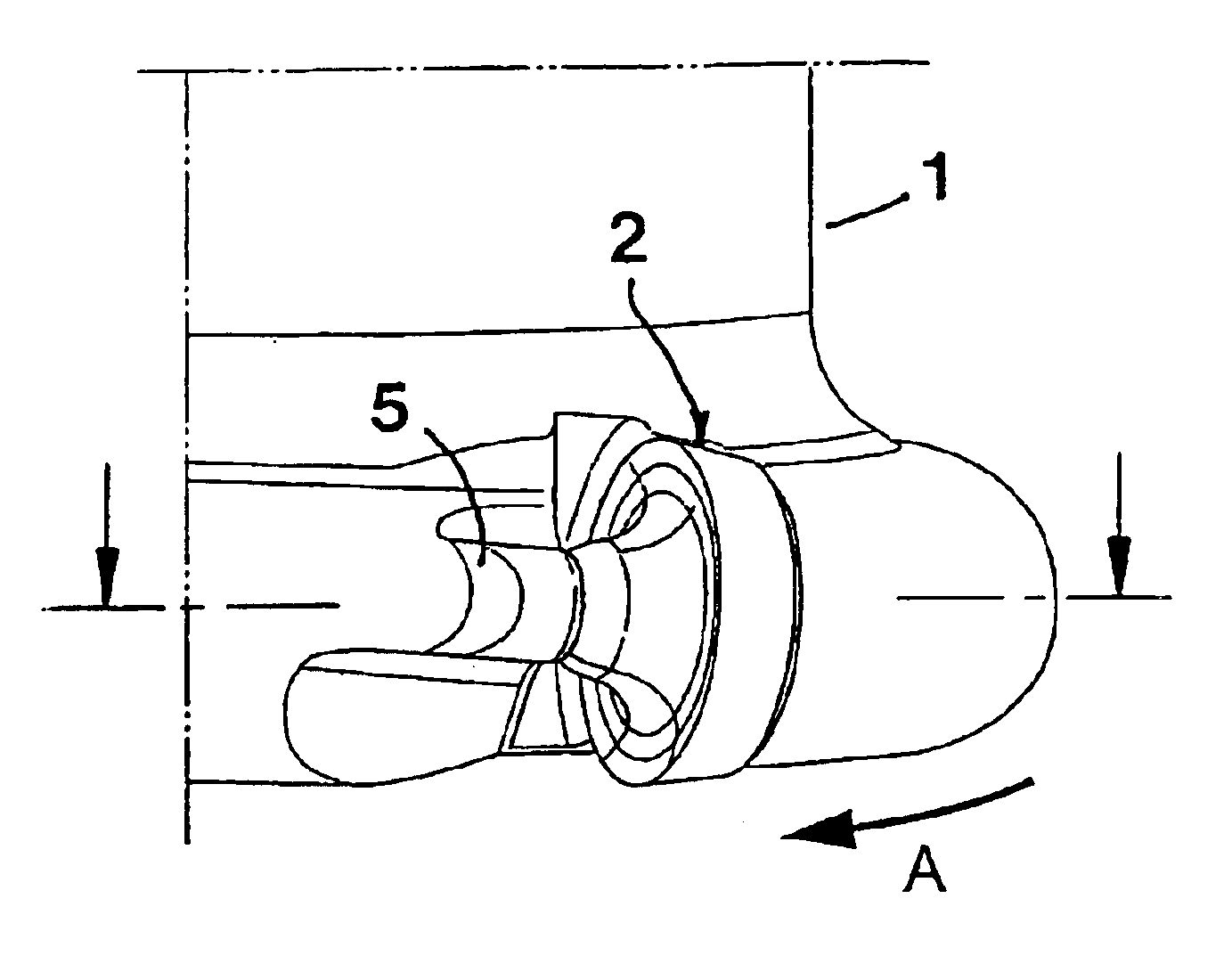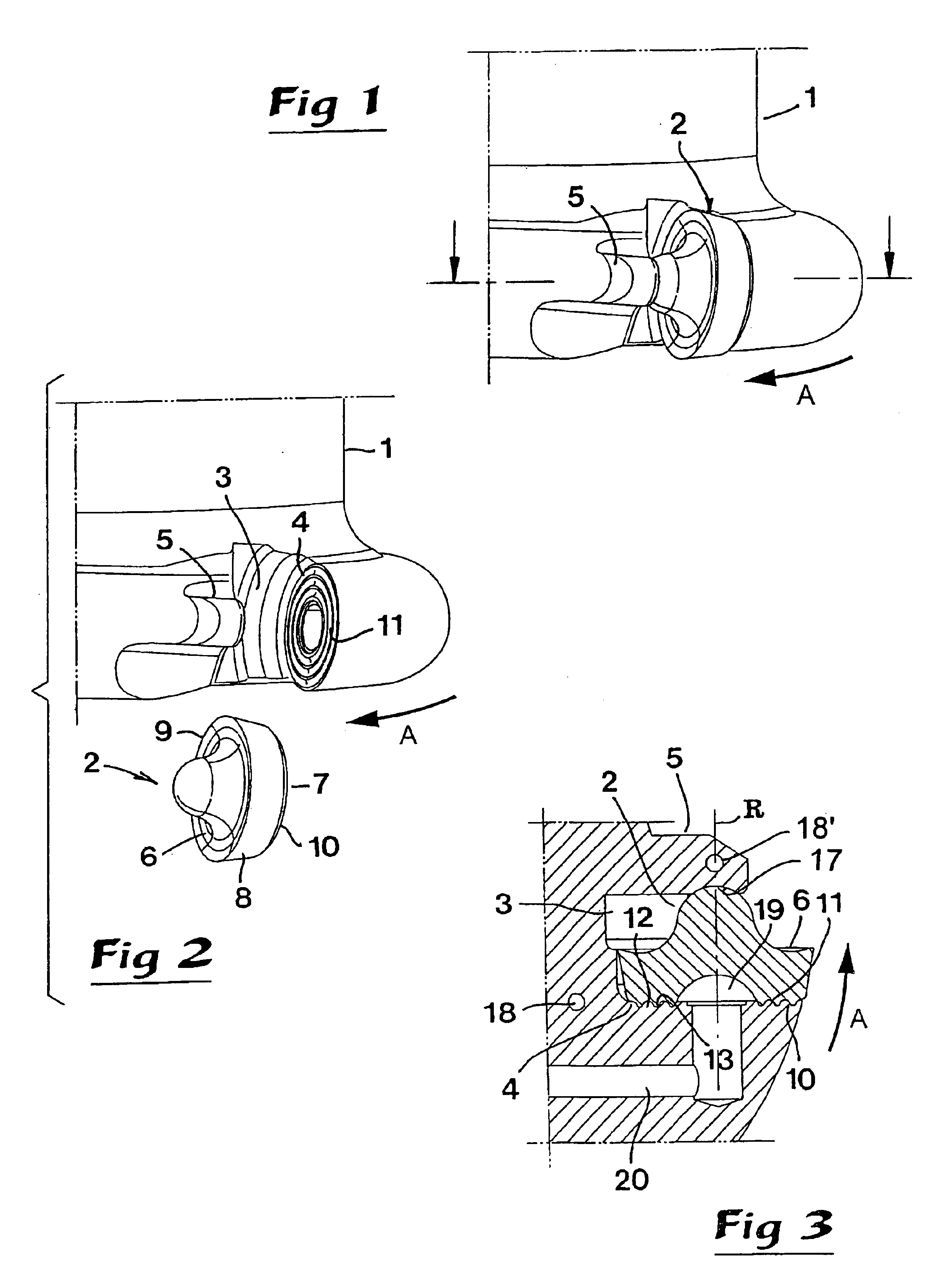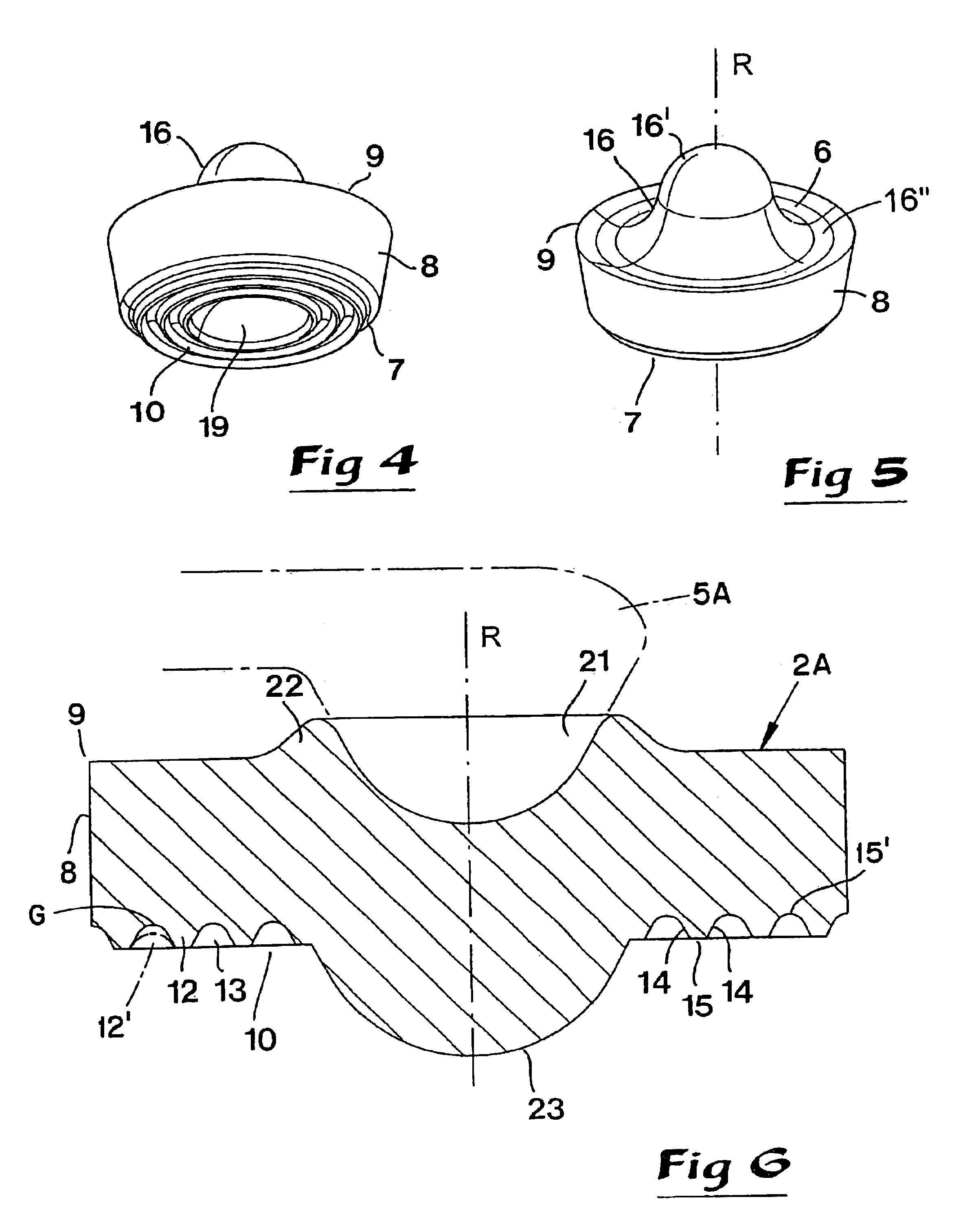Tool for chip removing machining and rotatable cutting insert for such tools
a technology of cutting insert and chip removal, which is applied in the field of tools, can solve the problems of unreliable, complicated and unreliable control of cutting insert and keeping, and use of complicated, expensive and unreliable bearing means for cutting inserts
- Summary
- Abstract
- Description
- Claims
- Application Information
AI Technical Summary
Benefits of technology
Problems solved by technology
Method used
Image
Examples
Embodiment Construction
[0018]In FIGS. 1-5, numeral 1 generally designates a basic body of a holder and numeral 2 a rotatable cutting insert. The basic body and the cutting insert together form a tool for chip removing machining, suitably in workpieces of metal. The invention is applicable not only to rotatable tools, such as milling and drilling tools, but also to fixed tools, such as turning tools. In FIGS. 1-3, only one cutting insert is shown on the partially illustrated basic body of the tool. However, in practice, one and the same basic body may be equipped with a plurality of cutting inserts.
[0019]In the practical realization of the invention, the basic body may advantageously, though not necessarily, be manufactured from steel or other comparatively “soft” metal, while the cutting insert is made from a considerably harder and more wear-resistant material, such as conventional cemented carbide, ceramics or the like. In a particularly preferred embodiment, the basic body is made from steel, while the...
PUM
| Property | Measurement | Unit |
|---|---|---|
| acute angle | aaaaa | aaaaa |
| diameters | aaaaa | aaaaa |
| ridge structure | aaaaa | aaaaa |
Abstract
Description
Claims
Application Information
 Login to View More
Login to View More - R&D
- Intellectual Property
- Life Sciences
- Materials
- Tech Scout
- Unparalleled Data Quality
- Higher Quality Content
- 60% Fewer Hallucinations
Browse by: Latest US Patents, China's latest patents, Technical Efficacy Thesaurus, Application Domain, Technology Topic, Popular Technical Reports.
© 2025 PatSnap. All rights reserved.Legal|Privacy policy|Modern Slavery Act Transparency Statement|Sitemap|About US| Contact US: help@patsnap.com



